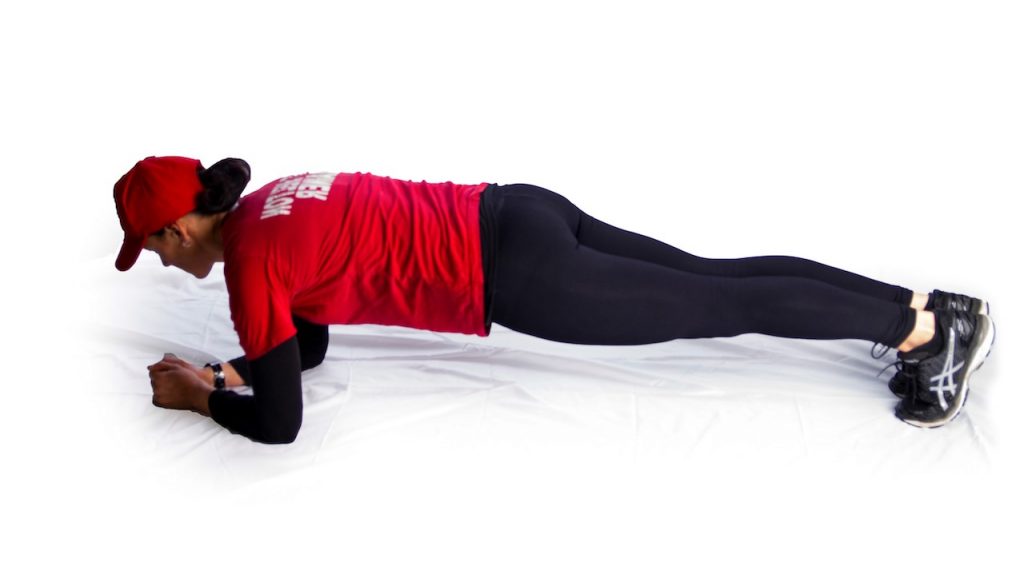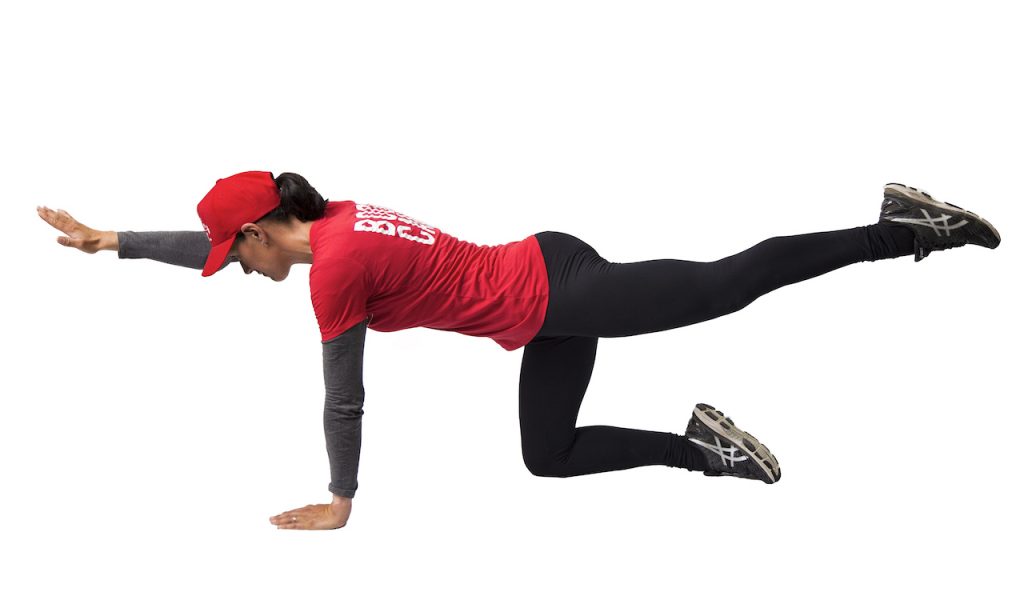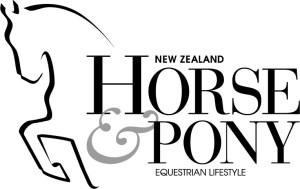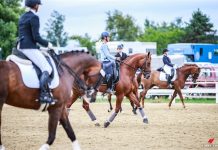
Your core is incorporated in every riding movement that you do. A good way to think of your core is to imagine it as a bridge that connects your upper and lower body.
A rider with a strong core will be better at sitting straight and balanced against the force of their horse, even while sitting to the trot. A rider with a weak core will not only be off balance, but they will also be more likely to be left behind or fall forward onto their horse’s neck whilst jumping.
When riding, your core most often acts as a stabiliser and a force transfer centre rather than a prime mover. Some people incorrectly think that if they just do sit-ups or crunches, it will improve their core strength for riding. But in fact, crunches and sit-ups target the rectus abdominis (also known as the abs or six pack) but do not train the more specific core muscles used for riding.
The core is a complex series of muscles extending beyond your abs, so to get the best results it is important to also train your obliques (sides), lower back, and the deeper core muscles such as the transverse abdominus (TVA). The TVA is a very deep postural muscle that influences core strength and back health, but more importantly the TVA is responsible for stabilising the core. It is located between your rib cage and your pelvis and wraps around your spine like a girdle. If you were to brace your core in preparation for being punched in the stomach, you would be activating your TVA.
If you want better riding performance, the first step is to target the main muscles used for riding, and that means improving core strength and stability. So why not take the challenge and try my core strength and stability workout. It takes less than 10 minutes to complete and only needs to be done three to five times per week.
Please note: Before participating; ensure you know your limitations. If you have previous injuries or are unsure, then seek medical advice prior to starting.
Core Strength and Stability Workout
This workout can be done anytime, anywhere, and you can even do it in your riding gear.
Work for 30 seconds on each exercise and rest for 5 seconds before moving down and completing all 5 exercises. Once you have completed the first circuit of 5 exercises, take a 30 second-break. Complete 3 Circuits . Beginner Option: Start by completing only one circuit and rest for 20 secs between each exercise. As your strength improves, reduce the rest period and/or complete more circuits
- PLANK

Start by resting on your forearms with your elbows directly under each shoulder joint, hold the plank position with a straight back. Do not drop your hips or stick your butt in the air. Squeeze your tummy up to your spine and hold it squeezed in, for the whole exercise.
Beginner Option – Rest the knees on the ground.
This exercise strengthens the control and endurance of the back and core stabilising muscles.
2. V-SIT

Start by lying on your back with your legs out straight and your arms reaching overhead on the ground. Your legs should be together with your neck and head in a neutral position.
Press your lower back into the ground and draw your belly button in toward your spine as you lift your legs and arms up off the ground. Squeeze your legs together as you try to get your shoulder blades up off the ground while keeping your lower back against the ground and abs engaged. Lower under control, inhale as you lower and exhale as you raise up.
Beginner Option – Bend your knees to keep lower back against the ground and abs engaged.
This exercise will improve your mind-body connection so that you can engage your entire core, and with enough practice it will happen automatically, as soon as you get into the saddle.
3. ALTERNATIVE LIMB RAISE

Starting in a box position place your palms directly under your shoulders and your knees under your hips. Draw in your belly button and suck your tummy to your spine first before raising an opposite arm and opposite leg. This activates your TVA – deep transverse abs. Both the arm and leg should be straight and your head should be neutral. Keep the shoulders and pelvis square, breath in as you lower and breath out as you raise up. Hold at the top for approximately 5 seconds. Repeat on the opposite side.
Advanced Option – Bring opposite arm and leg out straight, then move sideways approximately 45 degrees.
Stability is defined as the ability to remain unchanged despite the forces applied upon a certain region. This exercise improves stability and balance, helping you to keep your body in a balanced state for riding.
4. SEATED RUSSAN TWIST

Sit on the ground with your knees bent and your heels about a foot from your butt. Lean slightly back without rounding your spine. Place your arms in front of you (with or without a weight) and draw your belly button to your spine and twist slowly to the right. The movement is not large and comes from the ribs rotating, not from your arms swinging, so make sure you twist your shoulders to the side with your arms as well. Inhale through the center and rotate to the left.
Advanced Option – Lift your heels four inches off the floor.
Lower back pain is often caused from having a weak core. This exercise targets your obliques but your back muscles will be engaged to strengthen and support your spine.
5. PRONE COBRA

Begin this exercise by placing the arms out to the side with thumbs down, draw the belly button in to the spine, engage the buttocks and lower back as you raise your legs, chest, head and arms off the ground. As you raise up rotate arms so that your thumbs are sticking up towards the ceiling. Squeeze the shoulder blades together and push them down your back. Keep the head in a neutral position, be careful not to poke your chin out, as this strains the neck. Breath in as you lower down and breath out as you raise up. Hold at the top for approximately 10 seconds.
The prone cobra primarily targets the lower back and to a lesser degree also targets the abs, glutes and hamstrings.






